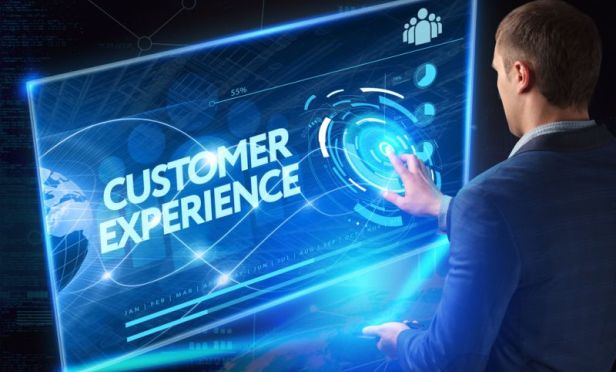 We simplyhave to learn to reinvent the insurance industry around the wayconsumers want to interact, before the industry is reinvented forus. (Image: Shutterstock)
We simplyhave to learn to reinvent the insurance industry around the wayconsumers want to interact, before the industry is reinvented forus. (Image: Shutterstock)
Most people who've worked a lifetime in the insurance industrymay not see a direct parallel with how Amazon's aggregator model is reaching intovirtually every aspect of consumer life, casting its shadowacross an ever-lengthening list of industries, and channeling thedirection in which technology is nudging insurance and financialservices.
|Yet, this is exactly the mindset our industry needs to becomeaware of and acknowledge, so as to adopt strategies to leapfrog thechallenges we face. This means addressing evolving customer expectations by offeringcomparison pricing and transparency, new products and innovativeservices.
|Further, it's aspiring to make the customer's experience trulyfrictionless, whether through quick delivery of quotes based on aminimum number of questions asked, but powered on the back end bybig data; or on the banking side, by being able to speed underwritea mortgage that's no less rigorously risk-assessed but with theprospective borrower not having to jump through hoops becausethrough open data, the necessary information on the borroweralready exists and doesn't have to be re-ascertained for thehundredth time.
|Related: Will Amazon truly shake up the homeowners'insurance market?
|While the financial industry is unlikely to have the broad reachinto consumers' lives as sectors such as retail, consumertechnology, telecom, entertainment and grocery, the digitization ofthese other industries have set up an expectation that thefinancial industry must also quickly move in this direction.
|Progress in our industry has been incremental rather than of adisruptive, "Big Bang" nature. Consider for example that ininsurance, it's taken us a couple of decades to get to a moreadvanced phase of online comparison, to evolve insuranceaggregation from clunky to streamlined, from sites that were hardto navigate and finally arriving at apps that are frictionless andconsumer-friendly.
|But clearly, when you think about Amazon's recent opening gambitinto insurance and healthcare, there's far more potential to shakethings up, well beyond comparison apps. In the past six months,this industry outsider has purchased an InsurTech company in India,announced with two other major employers, Berkshire Hathaway andJPMorgan Chase that it's looking for ways to make employee healthcare moreaffordable, and announced its acquisition of Pillpack. Where next?
|How can the industry begin to respond to these developments?First, by recognizing how easily a non-incumbent could steal awayits customers. Then by looking at where money can actually be made,and who is powering that shift.
|Data is central to digital transformation
For our industry to start thinking like an Amazon, it would lookfirst at ways to show their customers that they are valued.Understanding customer pain points, and delivering life-improvingsolutions to those pain points to as many people as possible, iswhere the solution lies, and where technology plays a role insolving this primary challenge.
|Data is clearly the fuel that will power this endeavor bysuggesting consumer-driven solutions. Data is allowing for a newform of transacting based on consumer habits, preferences,demographics and financial wherewithal — in short, their needs —supplanting traditional means of purchasing.
|Related: How digital commerce changed the insurance businessmodel
|In a larger societal sense, these platforms offer a way to helpand empower massive and under-served sectors of the population, forexample young millennials and the elderly, giving them access tomore choice, more availability of products and services, at a morereasonable price. A relentless pursuit of technological innovationto realize this goal can play a role in replacing retreating socialsafety nets.
|The role of open data
Between aggregation and comparison shopping and the trend towardthe open data models, some patterns are emerging that should startcoming into crisp focus for the insurance industry.
|With open data, consumers consent to making their financial dataavailable to third parties. In exchange, they expect and demand aseller-as-bidder approach to transactions such as buying insuranceand getting mortgages. Empowered consumers can thus gain theadvantage by "putting themselves out there" — they can have theirpick of the best priced, easiest, and highest value offers ininsurance and other financial services.
|Simultaneously, we're seeing a concept that has driven insuranceand financial services since its inception doing a 180. Generally,we have relied on making most of our revenue from a few, low-riskcustomers. Now, we are looking at the more sustainable valueproposition of getting a small amount of revenue from masses ofcustomers. Today's successful organizations understand that themodel has to change in order to thrive.
|Disruptors in insurance
Innovators from within our industry are also taking slices ofour pizza. Consider that there are one-month insurance policiesavailable online. How did this happen? It's a disruption of the long-held industry standardthat the minimum period for a household insurance policy is oneyear.
|Now these companies are competing for your customers, who wantinsurance for a month, and making it possible to provide coveragefor a policy period previously thought not worth the underwriting.Compare this to short term contracts for mobile phone or utilitybills… the customer's mantra seems to be: "Provide me only what Ineed and exactly when I need it — no more and no less."
|We have no choice but to engage in this manner. Insurance'slegacy model of minimal interaction with customers — think of lifeinsurers interacting with their policyholders only at the time ofunderwriting, and then with their families after their death — isno longer relevant, in light of current consumer demands forconvenience, transparency and interaction.
|Our industry needs to start thinking like those competitors that havelaunched themselves headlong at our world with their digitalmodels. After all, we have the key advantage: we know insurance.Now, we simply have to learn to reinvent the industry around theway consumers want to interact, before the industry is reinventedfor us.
|Nick Frankland is managing director of Fintech atLegal and General, a U.K.-based financial services and insurancefirm managing over $1.4 trillion in assets. He can be reached at[email protected].Opinions expressed are the author's own.
Want to continue reading?
Become a Free PropertyCasualty360 Digital Reader
Your access to unlimited PropertyCasualty360 content isn’t changing.
Once you are an ALM digital member, you’ll receive:
- All PropertyCasualty360.com news coverage, best practices, and in-depth analysis.
- Educational webcasts, resources from industry leaders, and informative newsletters.
- Other award-winning websites including BenefitsPRO.com and ThinkAdvisor.com.
Already have an account? Sign In
© 2024 ALM Global, LLC, All Rights Reserved. Request academic re-use from www.copyright.com. All other uses, submit a request to [email protected]. For more information visit Asset & Logo Licensing.








